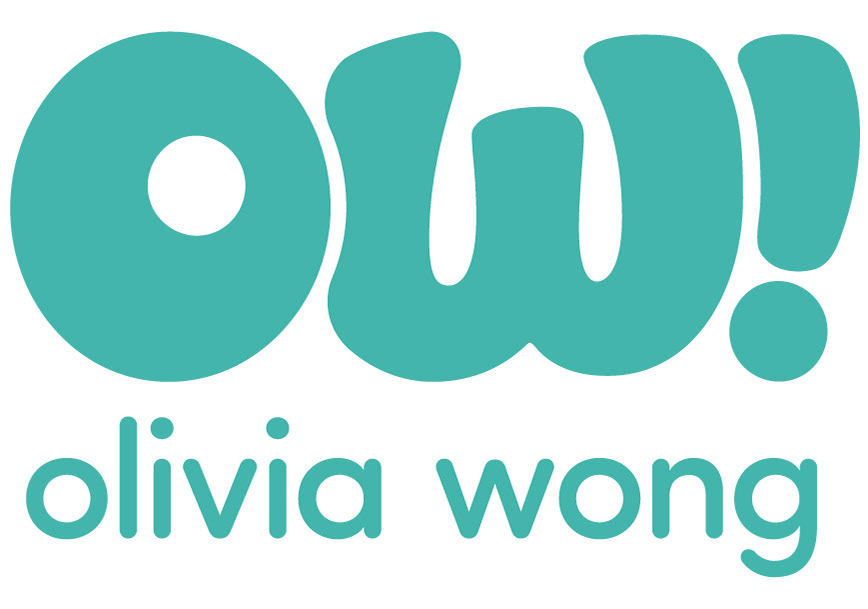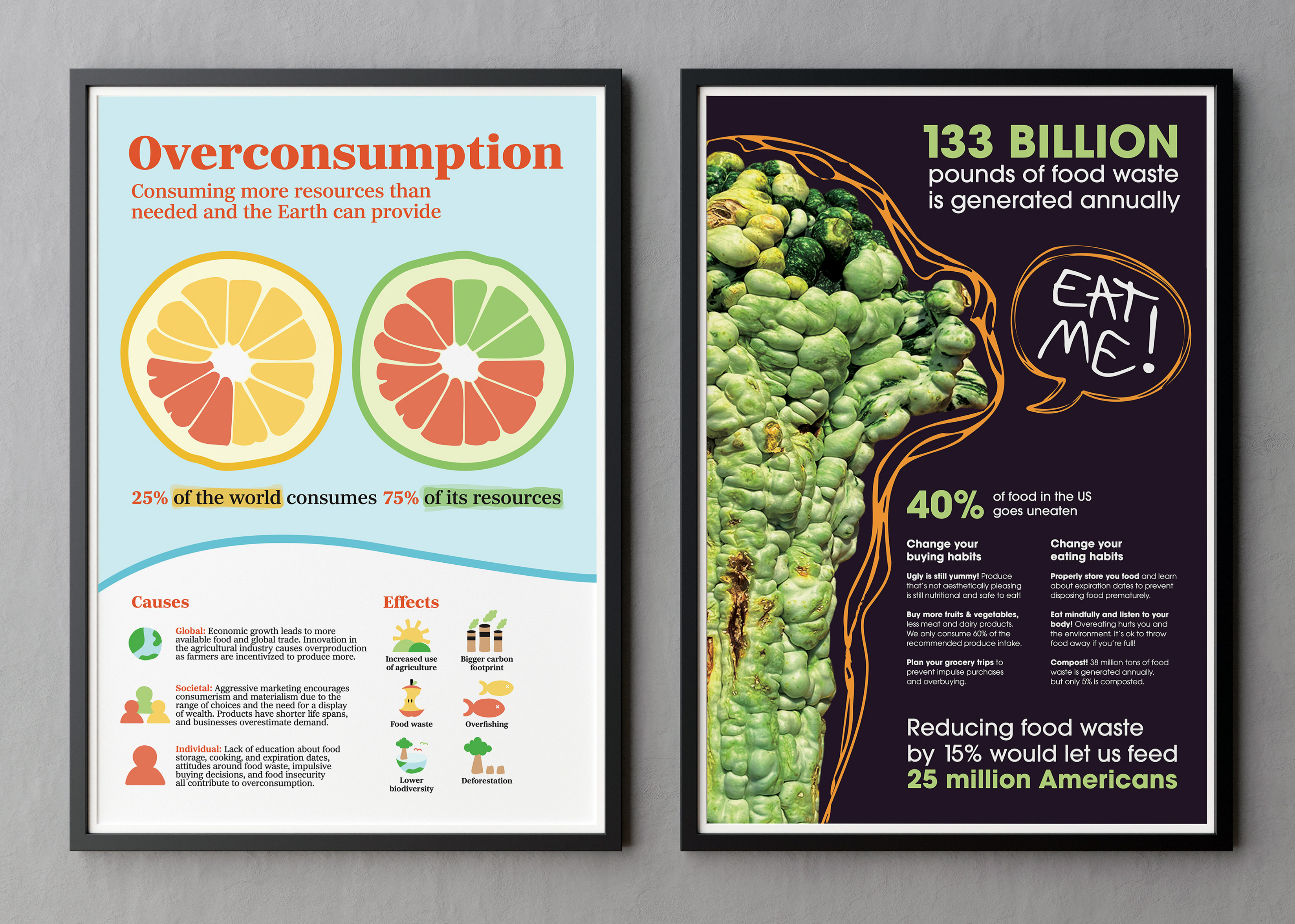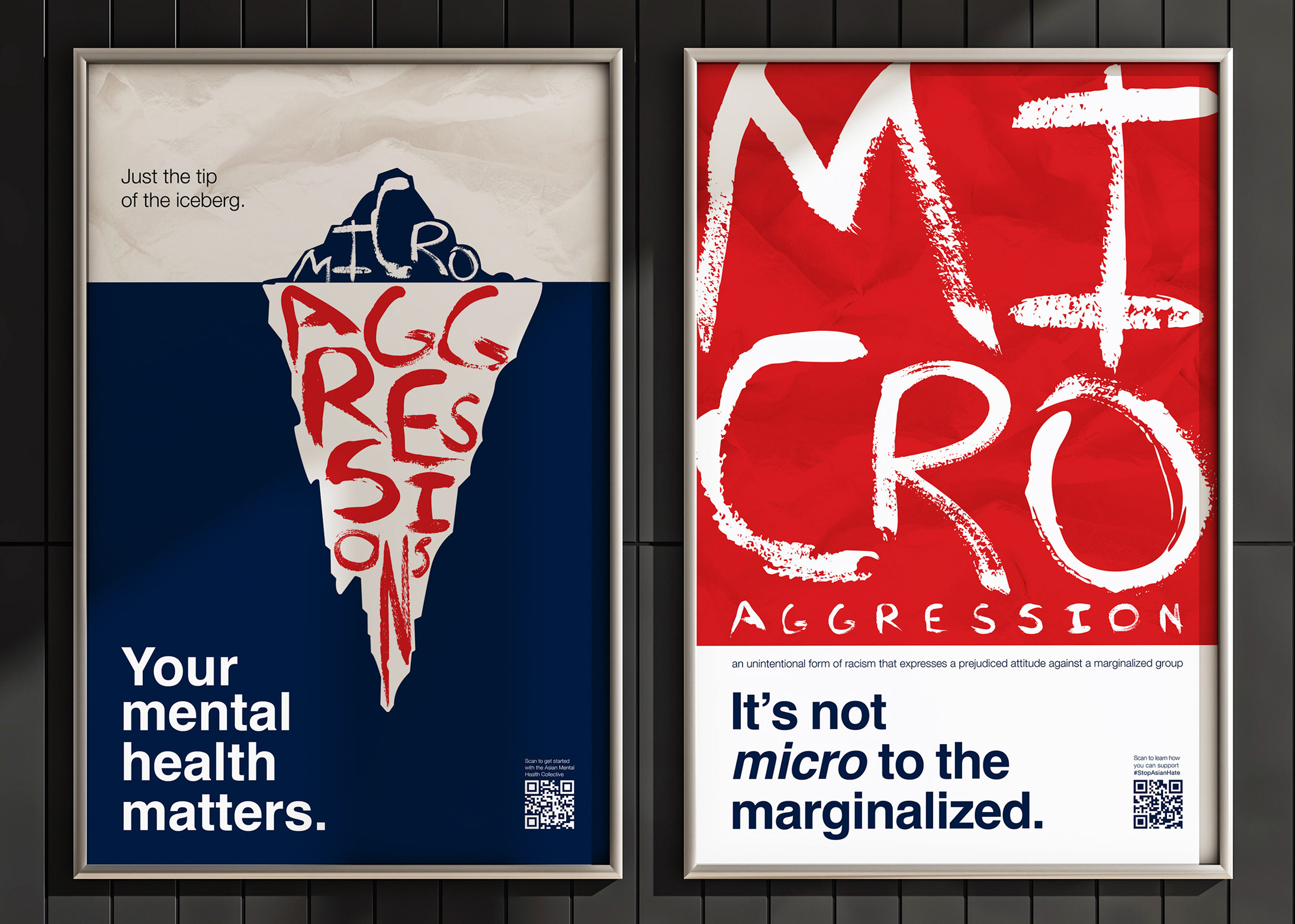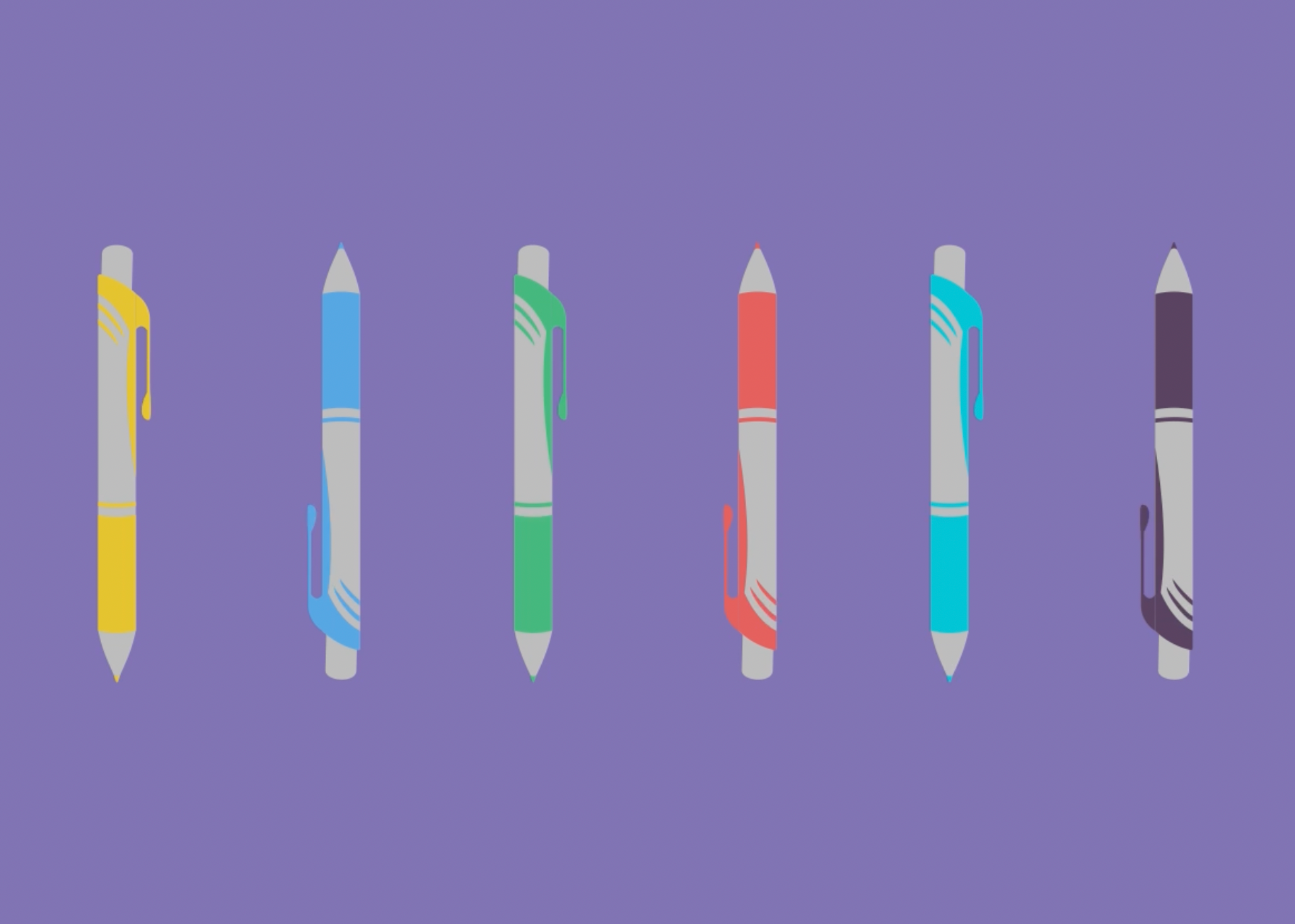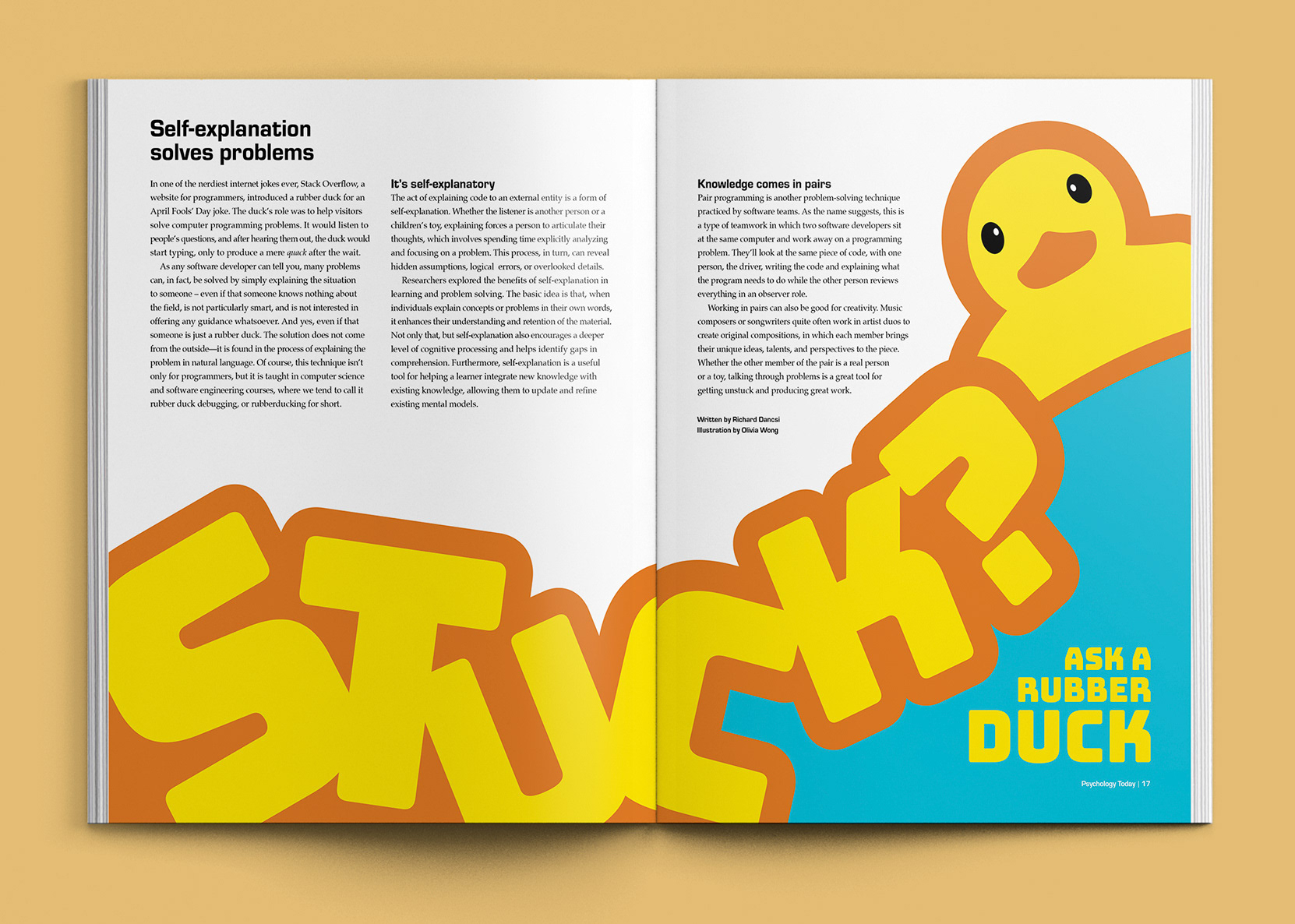The full museum exhibition, with 3 main panels and two side panels.
What's Out There?
What's Out There? is a museum exhibition about Unidentified Aerial Phenomena (UAPs), better known as UFOs, that is displayed in the Intrepid Museum from September 3–30, 2024. I chose to make a timeline about UFOs to challenge my audience's views on a topic that's received so much skepticism, and also to encourage people to think critically about the information they consume. I want my audience to be able to analyze the credibility of sources and make their own conclusions based on their own research and not fall prey to bias in the media.
I conducted my own research and wrote my own copy, which has been enhanced by ChatGPT. To view offline, download the PDF of my Design Rationale here. Or, continue scrolling for the web version!
The Installation: An Overview
The timeline is installed a room with two additional, shorter walls. Nothing occurs in a vacuum, so it's important to explain the historical context (middle wall) and government programs created to research UFOs (closest wall).
The back wall of the exhibition shows actual sightings, with QR codes linking to evidence. The side walls contain introductory information, and a short explanation about misinformation and disinformation since I want my audience to evaluate the "evidence" for themselves.
A 2D layout of how the panels are arranged on the 3D room.
Showing Information in a 3D Space
After finishing extensive research, I brainstormed different ideas of showing the information. During my ideation, I had a eureka moment—what if I didn't illustrate any UFOs at all? What if I challenged my audience to think differently about a cliche UFO and make them consider how people who saw them described them?
Left: A rudimentary, 2D timeline with 3 categories. Right: A space themed room, with the timeline wrapping around the walls.
I illustrated the descriptions people used to describe the UAPs they saw or something else related to the sighting. For example, Kenneth Arnold saw objects that moved like “flying saucers” around Mount Rainer, so I illustrated a flying saucer. This helps my audience to reevaluate the difference between commercialized UFOs and how they were actually sighted.
Once I finished copywriting and illustrating, I experimented with different versions of formatting my work. Should the timeline be a separate piece that sticks up from the wall, or should it be on the wall?
Experimentation With Line
I experimented with how to put the line on the timeline. Should it be on the bottom of the Historical Context wall and the top of the Government Programs wall? Or should it all be uniform, with lines on the top for both walls?
Which one can the audience understand more easily?
Digital Ideation
An earlier version of the timeline that would wrap around the room.
Exhibition Merchandise
I created two pieces of merchandise, a pair of socks and a t-shirt, for a gift shop to complement the museum exhibit. I also designed the shopping bag to hold your purchases at the gift shop.
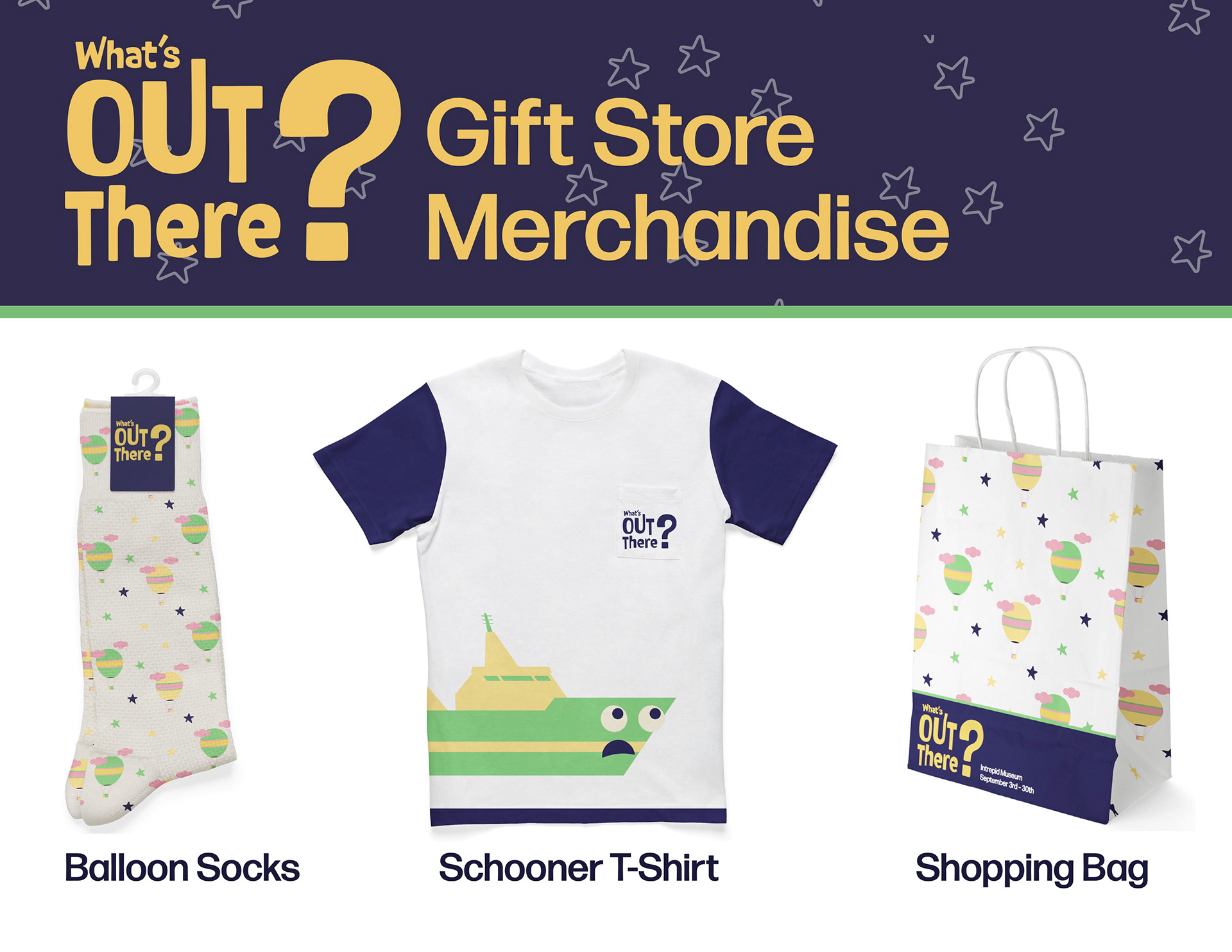
Balloon socks, a ship shirt, and a shopping bag!
Accordion Booklet (and Stickers!)
In order to engage my audience after the experience, I created an accordion book and a sticker sheet that they can take with them when they leave. The accordion book contains a shorter version of the information in the exhibit, and it’s meant to remind the audience about what they learned. The sticker sheet has similar goals of helping the audience remember the exhibit, though it is also more interactive and fun.
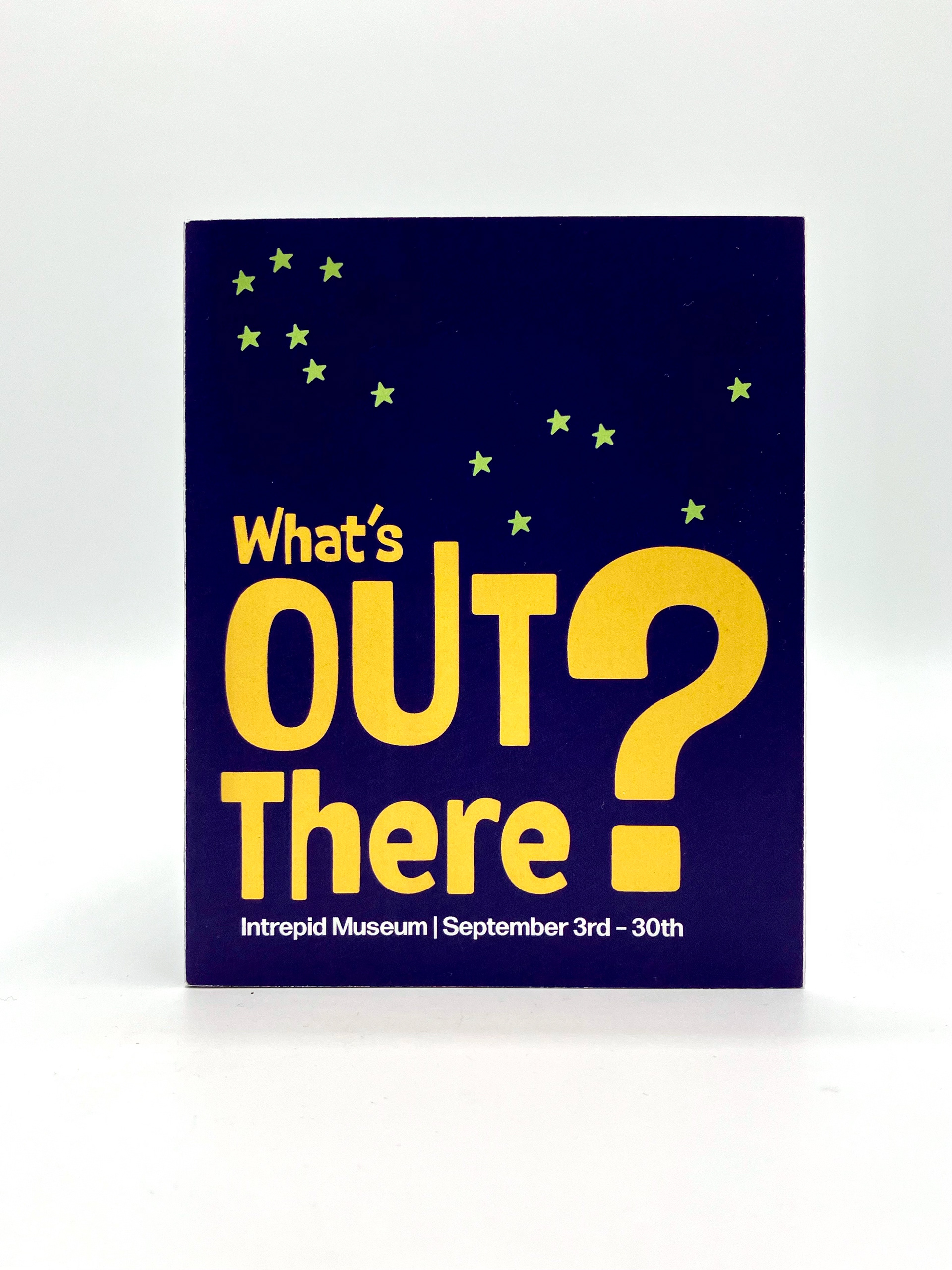
Front View
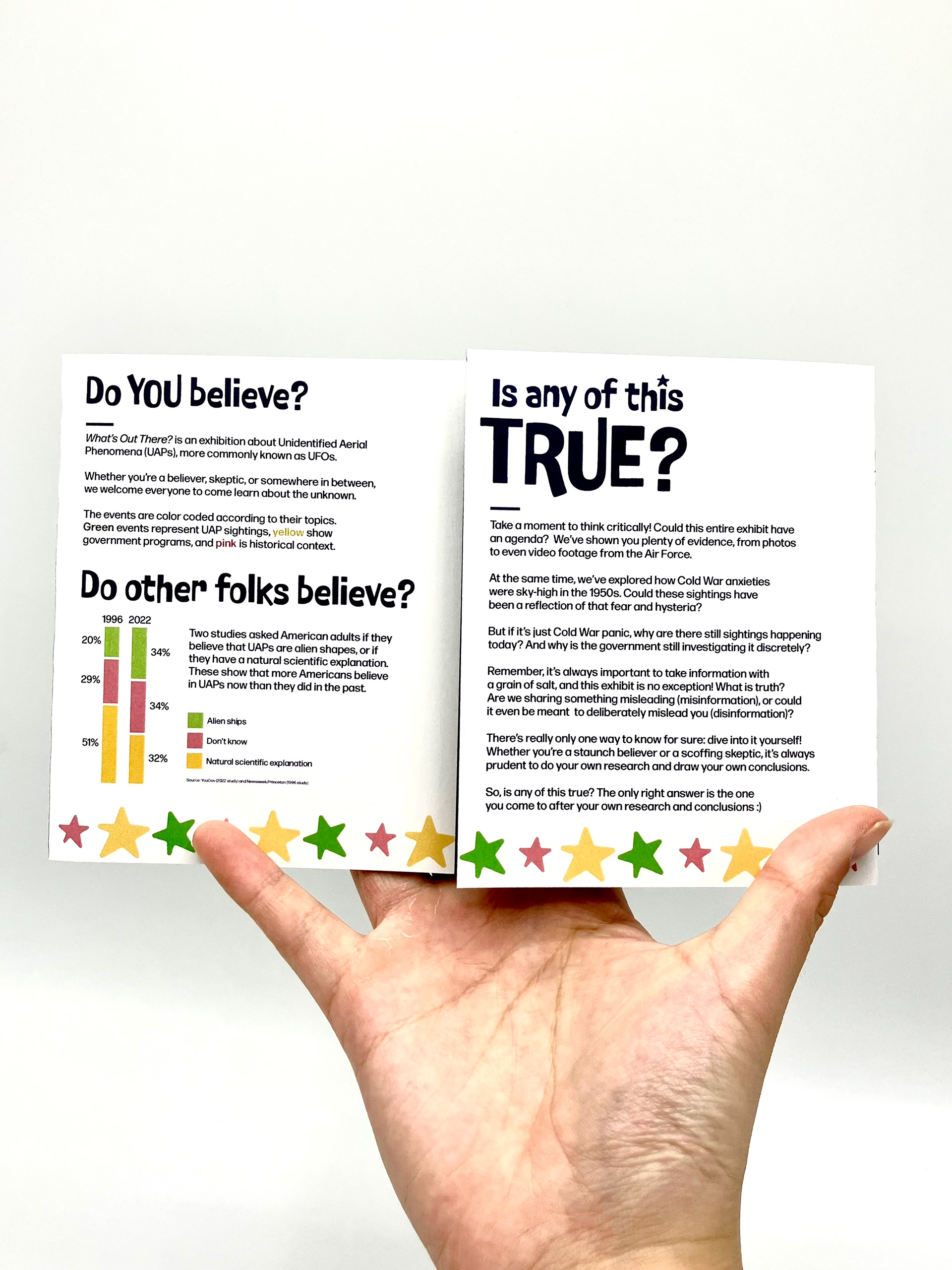
Inside Panels

Back View
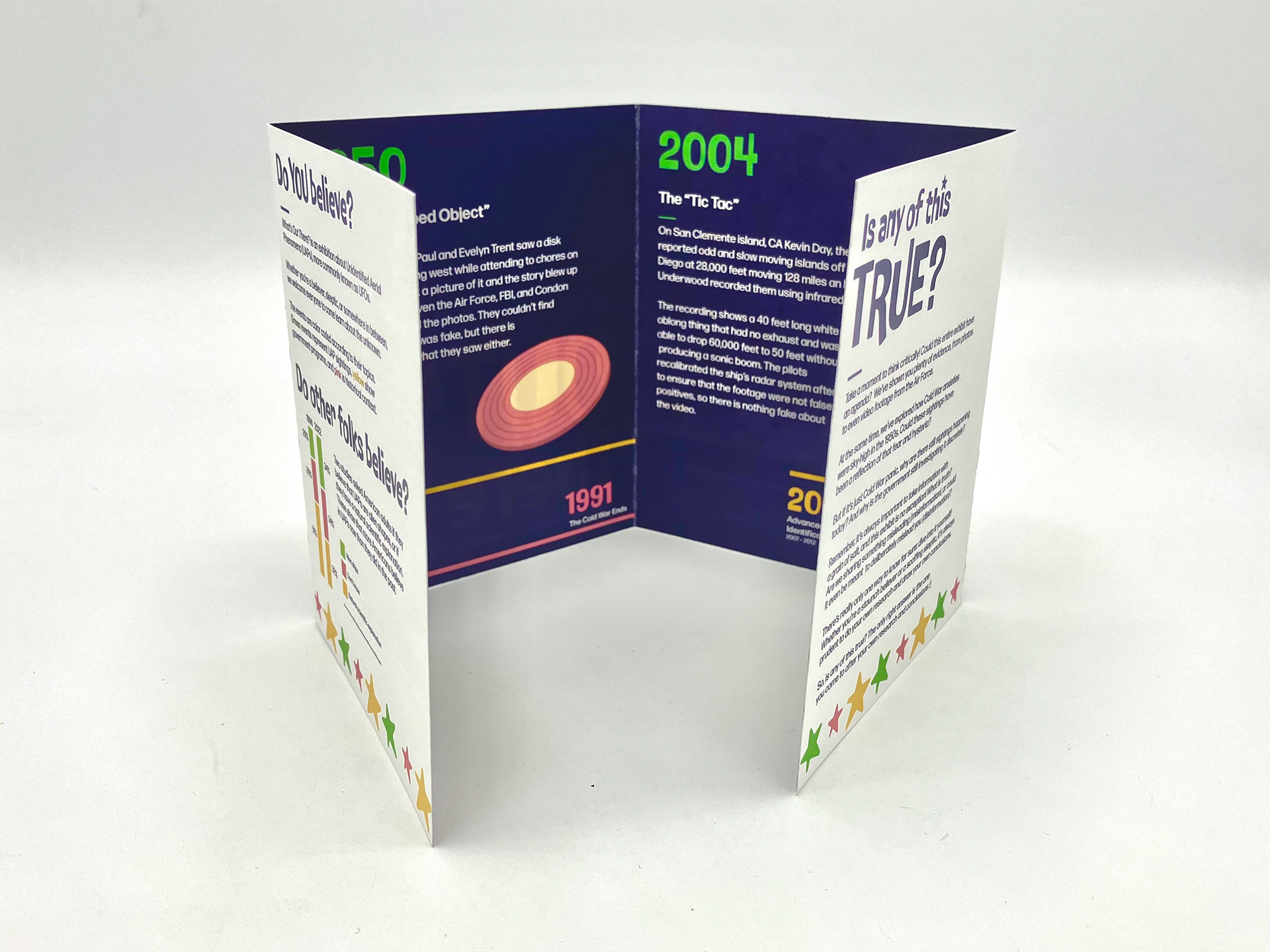
Standing
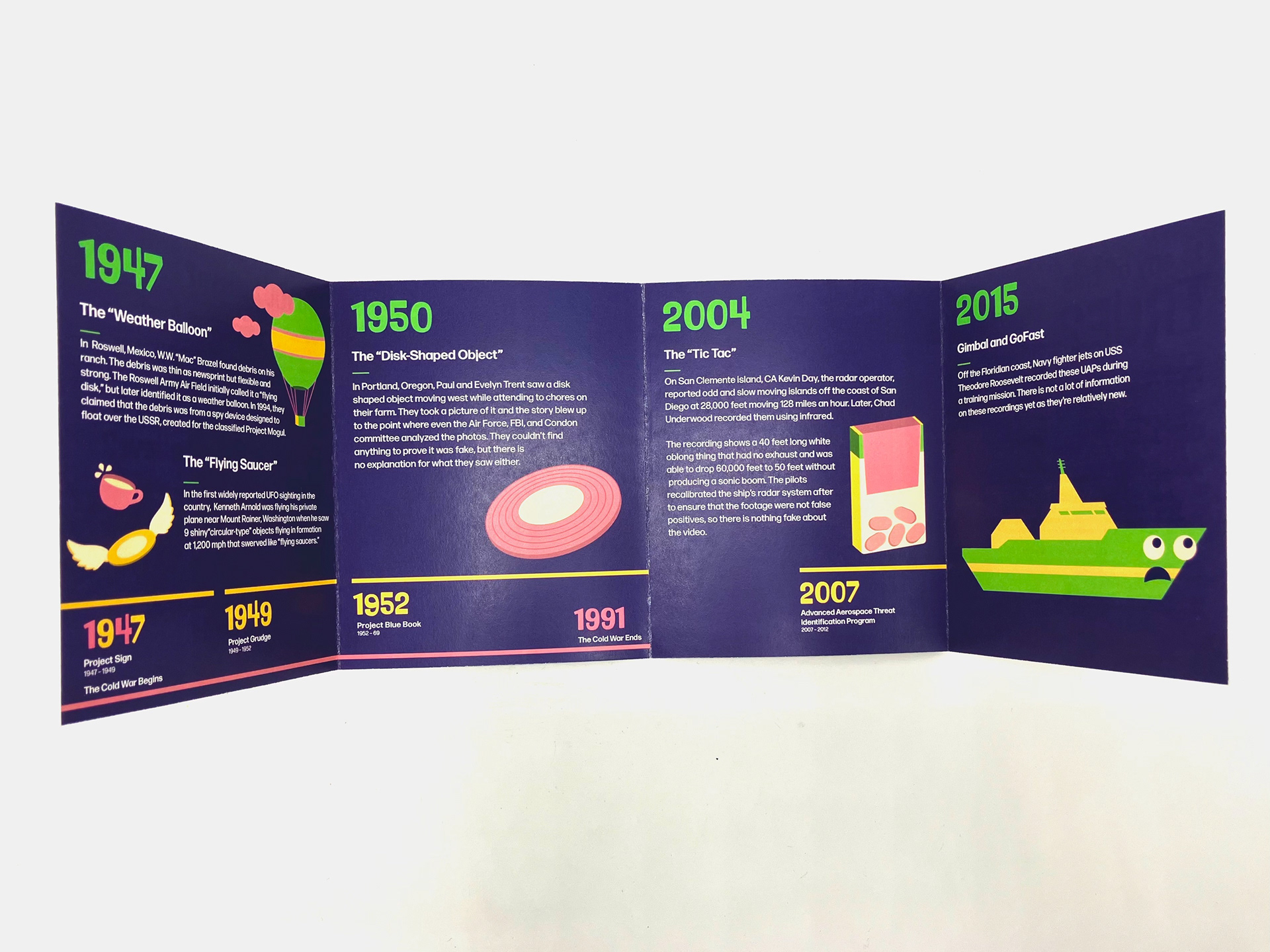
Inside View

Final Accordion Booklet, outside view.

Final Accordion Booklet, inside view.
Ideation

A previous version of the accordion booklet.

A previous version of the accordion booklet.

Sketches for a preliminary shopping bag (right) and the accordion book (left)
"Alien" Type
For title type, I used P22 Nudgewink Pro Bold. Nudgewink is funky and strange, which represents UAP sightings perfectly. I wanted a very distinctive typeface so I could use it as logotype and for the years on the timeline, so Nudgewink added the perfect alien feeling to my exhibition.
For body type I used Forma DJR Display Medium. It is rounded enough to match Nudgewink while retaining its legibility. Forma also has a distinct personality, but it does not overwhelm Nudgewink’s, I think the two typefaces complement each other very well.
Color
Since this is a timeline about UAPs, I decided to use space colors so that the audience becomes fully immersed in the experience. My primary color, dark blue, represented deep space and helps to facilitate contemplation. It is calm and represents intelligence and trust.
Light pink, green, and yellow were accent colors to help to color code my exhibit. I picked green since it’s the color most people think of when they think of aliens and UAPs, yellow to represent stars, and pink to add approachability and fun. Various tints and shades of these colors were used as needed for legibility and emphasis.
Pattern
I was inspired by constellations since they decorate the night sky, specifically Cetus, the Sea Monster Constellation. In Greek mythology, Cetus was killed by Perseus as he rescued Andromeda. Cetus took different forms over the years, but I was inspired by this constellation because it represents how people lash out because of their fear of the unknown, which happened frequently during the Red Scare and McCarthyism.
What I Learned
Designing for a 3D space presents unique challenges: This installation exists on such a huge scale, and it took a lot of trial and error to decide how tall the secondary walls should be. It was also fun to figure out how I should present my information, especially once I separated it into my three color coded categories. A 3D space gives you so much real estate to work with, but it's up to you to figure out how to make it interactive and engaging.
More than one meaning: How do you make someone who isn't interested in a topic still learn from your exhibit? How do you convince someone to visit your exhibit if they strongly believe aliens don't exist? I wanted to make this seemingly one-dimensional topic multidimensional by adding some real life applications. No matter if you're a UAP critic or totally disinterested in this topic, What's Out There? can teach everyone about evaluating sources critically, which is especially important in this digital age where misinformation can be so prevalent.
